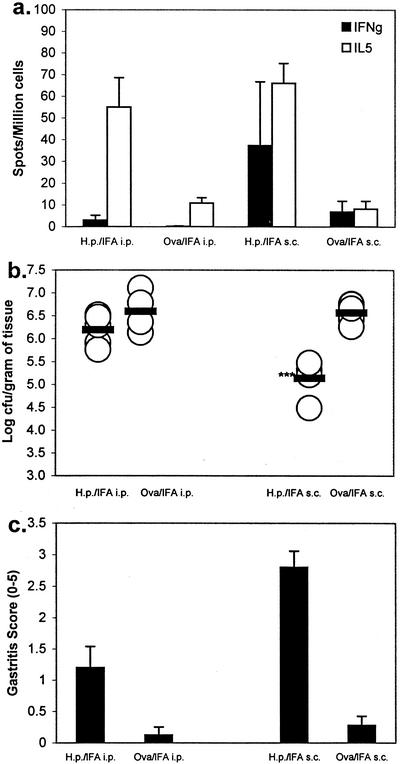FIG. 1.
Induction of anti-H. pylori (H.p.) immunity by systemic immunization of neonatal mice. (a) Spleen cells collected 28 days after a single i.p. or s.c. immunization with H. pylori lysate or OVA emulsified in IFA were stimulated in vitro with H. pylori lysate and tested by ELISPOT assay for IFN-γ or IL-5. Each value shown is the mean of three individual mice (tested in triplicate) ± the standard deviation. (b) Groups of mice given each vaccine formulation were challenged with infectious H. pylori on day 28 and sacrificed on day 48 for bacterial load assessment. Each symbol represents an individual mouse, and each bar represents the geometric mean of each respective group. A statistical significance of greater than 99.9% relative to OVA-immunized mice is indicated by the triple asterisks. (c) Gastric biopsy samples of the greater curvature were hematoxylin and eosin stained and graded for inflammation. Each value shown is the mean of each immunized-and-challenged group of mice ± the standard deviation.

